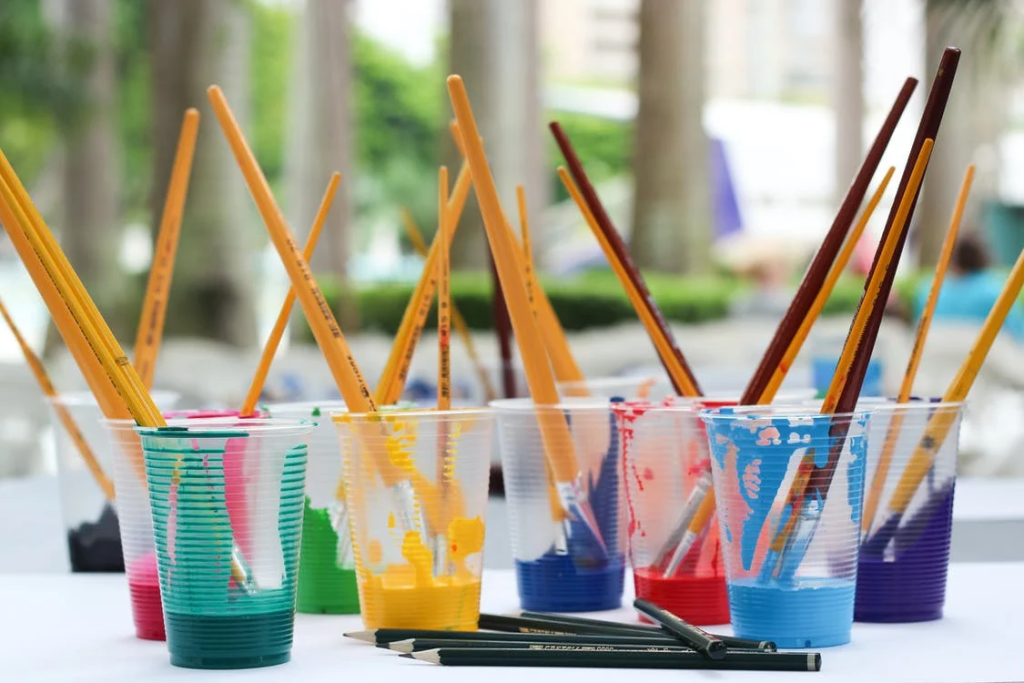
It’s generally best not to add water to acrylic paint. Acrylics are ready to use right out of the tube. Adding water or other mediums changes the paint’s thickness and properties. Water thins the paint, making it flow more easily. Though, be careful not to add too much water. Aim for less than 30% water in your mixture. Too much water weakens the paint’s adhesion. Keep reading to learn more about using acrylic paint effectively.
Can Acrylic be Used Without Water?
Acrylic paint, when applied directly to a surface, creates a vibrant, glossy, and robust film. However, diluting acrylics with water and applying them to absorbent materials like watercolor paper results in a soft, subtle, and evenly distributed color layer. This produces a semi-gloss finish with a gentle, diffused look.
What Happens When Acrylic is Overdiluted?
Acrylic paint, when diluted with more water, mimics watercolor. It also gains a matte finish. New to glazing? Mix a small amount of paint with 50% water by weight. This helps you understand the water needed.Cured acrylic resists water, enabling layering without disturbing lower layers. This layering is unlike watercolor’s behavior.
Adding too much water to your paint mix can weaken its adhesion to the surface. Opinions on this vary widely. Some experts and paint manufacturers agree with this, while others believe using ample water is fine for achieving desired effects. to be safe, we recommend using less water in your paint mixtures.
is it a Good Idea to Experiment with Acrylics?
Experimenting with varying water quantities in acrylic paint is a great way to deepen your understanding of this medium.Create a color chart, labeling each sample with the specific water ratios or mediums used to achieve the desired shade.
As the paint dries, observe how it starts to drip and separate into tiny color particles after dilution reaches a specific level. This shows that water weakens the acrylic polymer’s adhesive strength,causing the color to disperse within the acrylic polymer solution.
Using premium materials allows for diverse effects when blending paint with ample water. Superior professional acrylics often outperform student-grade paints in water absorption. This is because high-quality paints begin with a higher pigment-to-binder ratio compared to their lower-quality counterparts.
How Does Water Affect the Adhesion of the Paint?
Furthermore, as mentioned before, even diluting the paint with 100 parts water won’t cause adhesion issues. Adding that much water turns the paint into a stain. It will have almost no discernible layer thickness. The paint then soaks into the porous acrylic canvas. This is similar to how watercolor washes seep into paper. However, all acrylic mixes, including 1:3 or 1:20 proportions, dried with a noticeable layer. These mixes performed impressively well in the tests. Therefore, adhesion isn’t a concern when painting on an acrylic surface.
Should You Wet the Brush When Using Acrylic Paint?
Keep your paintbrushes in water while painting to stop them from drying out. If you need to clean a brush between colors, use a jar with a little water. This keeps the brush moist without damaging the handle’s finish.
What is the Ideal Viscosity of Acrylic Paint When Applied?
Paint viscosity describes its uniformity and thickness. Heavy body acrylics offer a luxurious, creamy texture. This texture enhances brushwork and simplifies color blending. Conversely, liquid acrylics are lighter yet maintain vibrant color intensity. They excel in detailed painting, dyeing, watercolor techniques, and dry-brushing, surpassing conventional acrylics. For a balanced approach, various acrylic mediums can be mixed to customize paint viscosity. Your choice depends on the painting style and personal preferences. Beginners should start with heavy body acrylics. They can be thinned with water or acrylic mediums as needed.
How Does Water Affect the sheen of the Paint?
The initial paint’s gloss or thickness is irrelevant. Adding more water will always flatten the paint’s finish. This affects the appearance, as flat colors appear less vibrant than glossy ones. If this is a concern,other materials can help you gain better control. Our tests show that the mixture of media and water results in a matte finish. You’ll need to adjust the ratio to achieve your desired sheen.
